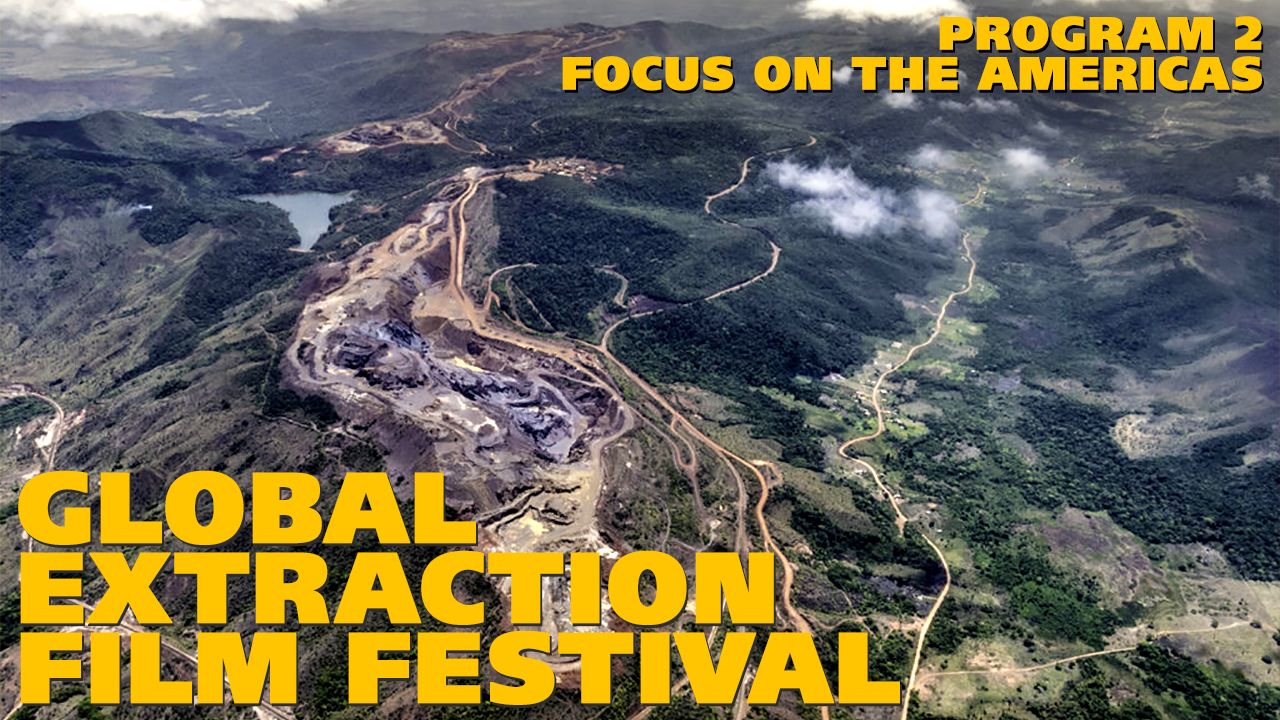GEFF2021 Program 2: Focus on the Americas
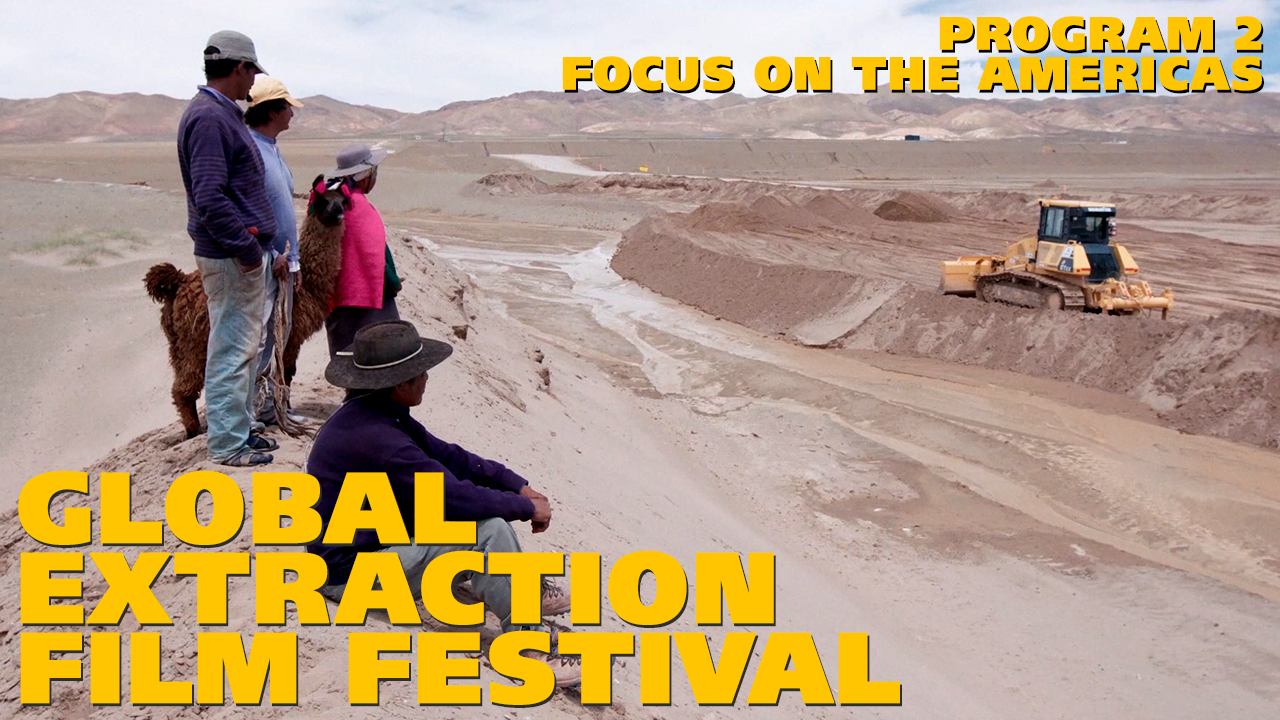
Streaming Online | September 9-12, 2021 | #GEFF2021 | #GlobalExtractionAction
GEFF2021 PROGRAM 2 * FOCUS ON THE AMERICAS
Curated by Esther Figueroa, Larissa Santos and Gina Chabes
The Focus on the Americas Program offers 100+ documentaries and urgent shorts from 30 countries in the Americas. These films, a combination of documentaries, news programming, YouTube content, and series, are listed first with regional films, then alphabetically by country, starting with Argentina and ending with Venezuela. Not all countries in the Americas are represented. For some countries, particularly in the Caribbean, we could not find available relevant films, for other countries we were not able to get permission to stream films that we requested, and for other countries we were simply not knowledgeable enough to know how to access their films. Nonetheless, the Focus on the Americas Film Program provides extensive, rich and varied content about the impacts of extraction on a vast region, as well as the many communities who are defending their land, waters, cultures and the future of the planet.
Why the Americas? Once known as ‘the New World,’ European Imperial Powers began extracting the Americas in the 15th Century. People of the America’s were enslaved, removed and exterminated. Their land was taken so that European settlers could occupy the land. Trees were killed as forests were turned into timber, and along with gold, silver and other “precious metals” were exported to Europe where immense fortunes were amassed. Africans were enslaved and transported to the Americas to work on plantations, the first example of modern industrial agriculture. The ecocidal and genocidal pillaging and settlement of the Americas led to the wealth of Europe (and later North America), and to the extraction intensive industrial revolution that accelerated the anthropocene and caused the climate emergency in which we are now living. Extraction of the Americas continues to this day, as does the taking of Indigenous peoples lives and lands. The Americas are essential to the world economy, the source of oil, gas, water, timber, lithium, copper, gold, silver, nickel, aluminum, iron, coal, agriculture, fisheries, tourism and much more. The Americas contain both the countries with the world’s most predatory extractive corporations, particularly Canada and the USA, as well as many countries whose main purpose is to be extracted.
Understanding extraction in the Americas is requisite for understanding the global political economy. Understanding the Americas is also essential to realizing there are Indigenous alternatives to planetary destruction, that communities throughout the Americas have been resisting erasure for centuries, and continue to protect and defend that which is necessary to all life.
The Focus on the Americas Program brings together various films that are already publicly available, but we also have many films that are festival exclusives, meaning that these films are only (freely) available during the festival (September 9-12). If this is the case, we have indicated this following the film’s title. In addition, these films, 17 in total, have their poster showcased as well.
Check out the GEFF 2021 PROGRAM 1 * GLOBAL PERSPECTIVES here
Check out the GEFF 2021 PROGRAM 3 * ANIMAL-HUMAN STUDIES here
Check out the GEFF2021 PROGRAM 4 * PRESENTED BY PATAGONIA here
Check out the GEFF2021 SPECIAL EVENTS here
Regional | Argentina | Bahamas | Barbados | Belize | Bolivia | Brazil | Canada | Chile | Colombia | Costa Rica | Curaçao | Dominican Republic | Dominica | Ecuador | Guadeloupe | Guatemala | Guyana | Haiti | Honduras | Jamaica | Martinique | Mexico | Paraguay | Peru | Puerto Rico | Suriname | Trinidad & Tobago | Uruguay | United States | Venezuela
REGIONAL
La Sangre de la Tierra (Félix Zurita de Higes, 2020, 49 min)
México, Honduras, Guatemala – Las montañas, los ríos y la tierra son sagrados para los pueblos indígenas y campesinos de México y de América Central. Son herencia de los antepasados, riqueza natural y fuente de vida que los ha sustentado durante siglos. Sin embargo, la riqueza de estos territorios ha despertado la ambición de grandes empresas que, en nombre del progreso, roban y amenazan a quienes se oponen a sus planes. En México y Centroamérica cada año mueren entre 50 y 60 defensores del medio ambiente por luchar contra el saqueo de las tierras ancestrales de sus comunidades.
Turning the tide in the Caribbean (Xenia Böttcher (reporter), 2020, 29 min)
Belize, Curacao, Panama – Climate change is warming the seas, sea levels are rising and storms are increasingly severe. This affects people and as well as marine ecosystems. The indigenous Guna people of Panama fear their islands are doomed. In Belize, Fragments of Hope is working to restore Belize’s barrier reef. In Curaçao massive rafts of sargassum wash onto its shores, Turtle Rescue volunteers free turtles trapped in the seaweed.
Latinoamerica – Territorio en disputa (Nicolas Trotta and Esteban Alfredo Cuevas, 2019, 97 min)
Latin America – Desde el sur del Río Bravo hasta el estrecho de Magallanes, 38.696 km recorridos, 7 países visitados, 2 años de rodaje, 40 entrevistas a los máximos referentes políticos, sociales y culturales de la región para contar la historia de un continente en disputa: Latinoamérica y la hegemonía del continente entre las fuerzas conservadoras y los movimientos populares.
Climate Change is a Gender Issue (Esther Figueroa, 2018, 10 min)
Caribbean – This film focuses on the relationship between gender and climate change, including particular impacts of climate change on women and men, the role of women in responding to these impacts, and the contribution of women to the fight for climate justice.
Titicaca, Entre el Oro y el Mercurio (Heeder Soto, 2017, 82 min)
Perú y Bolivia – El documental inicia en la frontera de Perú y Bolivia, en el cual, los mineros informales de Bolivia, contaminan al Rio Suches; afectando drásticamente a los pobladores rivereñas de Bolivia y Perú. La película muestra la dramática lucha de los pobladores de la cuenca del rio Llallimayu con la minera Aruntani S.A.C., que ha contaminado el rio, matando sus peces y ocasionando la muerte de sus animales. Frente a esto, los representantes del Estado peruano, parecieran que están a favor de la minera, como muestran los pobladores.
Caribbean Climate Change – The Take Away Messages (Esther Figueroa, 2017, 13 min)
Caribbean – Prof. Michael Taylor, the Caribbean’s leading Climate Change Scientist, explains the basic issues pertaining to Climate Change and the Caribbean. 1. The Caribbean Climate is already changing and the Caribbean is highly vulnerable. 2. The Climate will continue to change in unprecedented ways and have unprecedented negative impacts across all aspects of Caribbean life. 3. In the Caribbean we must take urgent action in the form of Mitigation, Adaptation and Education to build resilience and the world must take immediate actions to keep global warming below 1.5 degrees.
Casa en Tierra Ajena (Ivannia Villalobos Vindas, 2016, 81 min)
Costa Rica, Honduras, Guatemala, México, Nicaragua, el Salvador – Casa en Tierra Ajena, is a documentary about the right to stay and the right to leave. It shares the stories and dreams of people in Central America who are forced migrants, as well as those who have remained in their countries resisting and transforming their realities.
Flin Flon Flim Flam (John Dougherty, 2015, 52 min)
Canada, Guatemala, Peru and USA – In Flin Flon Flim Flam, InvestigativeMEDIA turns its unflinching focus on Canadian miner Hudbay Minerals Inc. and its controversial plans to construct the massive Rosemont open-pit copper mine in the Santa Rita Mountains on the Coronado National Forest southeast of Tucson.
Las Rutas del Oro (Audrey Córdova , 2015, 29 min)
Perú, Bolivia y Brasil – Nos muestra los caminos que sigue el comercio ilegal de oro amazónico en el Perú, Bolivia y Brasil.A través de imágenes y testimonios de mineros ilegales, investigadores y autoridades, “Las rutas del oro” nos revela cómo se lleva a cabo esta actividad en una de las zonas más biodiversas del mundo, y por qué los esfuerzos desplegados para poner fin al comercio ilegal de oro no han sido suficientes.
ARGENTINA
La Extracción de Hidrocarburos Divide a un Pueblo (Alejandro Rebossio (reporter), 2021, 4 min)
Cientos de fruticultores cultivan peras y manzanas en Allen, en el Alto Valle del Río Negro, en la Patagonia Argentina. En los últimos años, muchos productores han alquilado o vendido sus campos a petroleras como la nacional YPF para la extracción de gas mediante la controvertida técnica de la fracturación hidráulica o fracking. Pero otros se resisten a este tipo de explotación. Denuncian enfermedades y grietas en sus viviendas y han recurrido a la Justicia con un recurso de amparo.
Fondo – Otra Vez la misma receta (Alejandro Bercovich, 2020, 79 min)
¿Qué es el Fondo Monetario Internacional [IMF]? ¿Quién lo controla? ¿Qué proponen sus recetas? ¿Quién las diseña? ¿Cambió o sigue siendo el mismo? Este documental recoge las experiencias de Grecia, Portugal y Argentina.
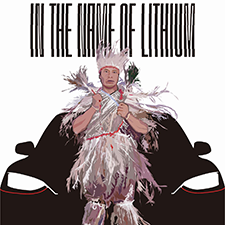 En el nombre de litio (In the Name of Lithium, Cristian Cartier and Martin Longo, 2020, 75 min, festival exclusive!)
En el nombre de litio (In the Name of Lithium, Cristian Cartier and Martin Longo, 2020, 75 min, festival exclusive!)
Clemente Flores lives in the community ‘El Moreno’, in Salinas Grandes, Jujuy, Argentina, where more than 30 indigenous communities struggle to prevent the imminent arrival of multinational mining companies to extract lithium, the new white gold. In search of answers to his silent claim to be included in the decision-making process, Clemente embarks on a revealing journey, to return and organize, together with the other salt communities, a resistance action in defense of their territory. In the Name of Lithium is a documentary about the urgency of reaching an equilibrium with the Pachamama.
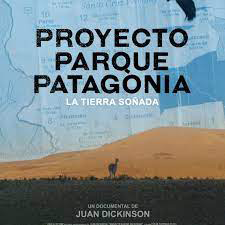 Proyecto Parque Patagonia (Juan Dickerson, 2020, 80 min, festival exclusive!)
Proyecto Parque Patagonia (Juan Dickerson, 2020, 80 min, festival exclusive!)
La disputa territorial que hay en la provincia de Santa Cruz, desde el 2014 hasta esta parte, por la extensión de las áreas ecológicamente protegidas. La polémica involucra principalmente a la ONG “Fundación Flora y Fauna Argentina” (FFFA), que quiere comprar más hectáreas de las que adquirió años atrás para conservar especies y restaurar zonas dañadas por la actividad extractiva, y a los funcionarios públicos de la provincia, que se muestran reticentes a ceder más tierras y abandonar la producción ganadera que funcionó históricamente en el lugar.
Cinco Corazones (Martin Parlato, 2020, 35 min)
Argentina currently exports 60% of all horse meat consumed globally. However, the consumption of horse meat is prohibited in Argentina itself and no horses are bred for this purpose in the country. So, with 200,000 horses being slaughtered each year for export to the European Union, where exactly is this meat coming from?
Viaje a los Pueblos Fumigados (Fernando ‘Pino’ Solanas, 2018, 97 min)
Un documental sobre los efectos de los agroquímicos en siete provincias de Argentina, las secuelas sociales del monocultivos de soja y el uso incontrolado de herbicidas y otras sustancias químicas. Se exponen las nefastas consecuencias sociales y ecológicas que crea el modelo transgénico con agrotóxicos, el cual favorece a multinacionales y terratenientes.
Habitat en Peligro (Aitor Sáez (reporter), 2020, 4 min)
El plástico y el cambio climático ponen en peligro a los pingüinos de la Patagonia. Miles de estas aves nidifican entre residuos plásticos generados por las ciudades y la industria pesquera. Las crías sufren más, ya que los adultos deben recorrer mayores distancias para hallar alimento.
Depositos Naturales de Carbono (Aitor Sáez (reporter), 2020, 4 min)
Tierra del Fuego, la región más austral del planeta, esconde uno de los ecosistemas más particulares y desconocidos: la turbera, un tipo de humedal que ejerce la función de una selva tropical y que está amenazado por la extracción industrial. También los pingüinos de Tierra del Fuego corren peligro por el plástico que invade sus nidos y altera su dieta.
La Guerra del Fracking (Pino Solanas, 2013, 87 min)
A través de un viaje hacia el yacimiento Vaca Muerta, en Neuquén, con el especialista Félix Herrero y la investigadora Maristella Svampa, se recogen reveladores testimonios de los pobladores y técnicos sobre los efectos contaminantes del nuevo proceso de explotación de petróleo y gas no convencional. El fracking, destruye el subsuelo y contagia las napas de agua con cientos de sustancias químicas nocivas. En los EEUU está causando uno de sus mayores daños ambientales y ha provocado la protesta de las poblaciones afectadas y de miles de artistas, científicos e intelectuales. En las provincias argentinas, decenas de municipios han prohibido la instalación de estos pozos, declarándose libres de fracking.
Payada pa’ Satán (Antonio Balseiro y Carlos Balseiro, 2013, 7 min)
Un cortometraje animado contra la mega-minería que cuenta la historia de cómo la vida de un gaucho riojano y su esposa se ve gradualmente arruinada por la megaminería. En una zona rural y tranquila, un día la tierra empieza a temblar. El Gaucho y su esposa, asustados, creen que se trata de un maleficio de Satán.
BAHAMAS
Searching for Survival – Hurricane Dorian Environment Documentary (Bahamas National Trust, 2020, 17 min)
On September 1st, 2019, Hurricane Dorian made landfall in The Northern Bahamas. This climate-charged storm wreaked havoc on people and communities in Abaco and Grand Bahama. This intense storm also left a devastating impact on the environment. The Bahamas National Trust along with its partners assembled teams on Abaco and Grand Bahama to assess the extent of the damage of this storm on the environment, including at-risk birds and their habitats.
Plastic Warriors (Lavado Stubbs, 2019, 10 min)
The marine litter concentrations for The Bahamas and the wider Caribbean is nearly 3 times the global average, with an accumulation rate of up to 600 million metric tonnes of plastic by 2025 for The Bahamas. On the frontlines of tackling this issue is Kristal Ambrose, also known as “Kristal Ocean”, a marine and environmental scientist who grew up loving the oceans surrounding her island home of The Bahamas. Plastic Warriors follows her unique approach to education and activism. Kristal connects Bahamian youth to the marine environment. The Bahamas passed a law banning select single use plastics, a monumental law brought forward by the plastic warriors.
BARBADOS
Spotlight on the Eastern Caribbean Flying Fish Fishery (CANARI & UWI-CERMES, 2018, 16 min)
The Flyingfish live in all oceans, especially in tropical waters such as the Caribbean, but Flyingfish are especially important to Barbados, so much so that Flyingfish are one of the national symbols of Barbados and the Flyingfish fishery is dominated by Barbadian fishing interests. This video discusses the challenges facing the management of the fishery in the Eastern Caribbean.
BELIZE
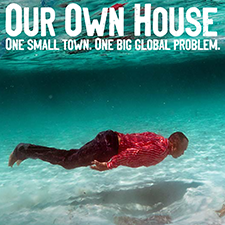 Our Own House (Vanessa Bergonzoli, Jeremy Kaplan and Tyler Robinson, 2020, 22 min, festival exclusive!)
Our Own House (Vanessa Bergonzoli, Jeremy Kaplan and Tyler Robinson, 2020, 22 min, festival exclusive!)
The locals in Punta Gorda in southern Belize, remember a time without electricity, roads, and plastics. Amidst the influx of single-use plastics, an activist and his neighbors confront the threat to their piece of paradise.
BOLIVIA
Lithium: New Gold Rush in the Andes (Matthias Ebert (reporter), 2021, 28 min)
High in the Andes mountains, mining companies are gearing up for the massive extraction of lithium — the raw material of the future. Lithium batteries are used to power the electric vehicles that will play a key role in the new energy revolution. Bolivia is home to the world’s largest lithium reserves, including a huge deposit buried under the crust of the huge Salar De Uyuni salt flat. Some German investors are trying to set up a joint venture to extract litihum there, but haven’t yet worked out a deal with Bolivia’s government.
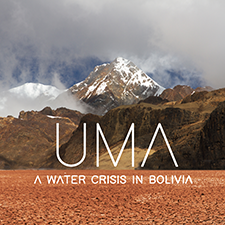 Uma – La Crisis del Agua en Bolivia (Ana Llacer, 2020, 77 min, festival exclusive!)
Uma – La Crisis del Agua en Bolivia (Ana Llacer, 2020, 77 min, festival exclusive!)
Three indigenous communities in the Bolivian highlands fight to protect their water from diversion and mining contamination amid a national water crisis. UMA, the Aymara word for water, takes us on a journey from the tropical Andean glaciers and the highest navigable lake in the world to the mines of Oruro, and the vanished Lake Poopó. It is a women’s story of displacement, resistance, and struggle for environmental justice.
Rising from the Flames (WWF-UK, 2020, 6 min)
In the second half of 2019, Chiquitano Dry Forest region was affected by forest fires that spread throughout Bolivia, mainly near the border with the Brazilian Amazon. The Palmarito de la Frontera community have relied on Copaiba trees for many generations, using the resources from the forest for their living.
Cero Rico – The Silver Mountain (Armin Thalhammer, 2015, 31 min)
In the Bolivian highland, Cerro Rico, a mountain of great significance rises. Since over 400 years people there are mining for silver. The international awarded movie offers an impressive insight into the hard and dangerous daily routine of Cerro Rico’s miners. Dust, hollow hammering and the headlights generate a unique and bizarre scenery, at one of the most dangerous workplaces in the world.
Child Workers of the World Unite (Vice News, 2013, 16 min)
A Vice News expose of the child workers in the Cerro Rico in Potosí, Bolivia, one of the oldest active silver mines in Latin America. Cerro Rico extraction and exploitation began with Spanish conquest in 1544 and was an important source of the enrichment of Spain via slave labour. In 1936, George Orwell visited a coal mine in Grimethorpe, England. “The place is like…my own mental picture of hell,” he wrote of the experience. “Most of the things one imagines in hell are there—heat, noise, confusion, darkness, foul air, and, above all, unbearably cramped space.” Orwell’s description applies to Cerro Rico, a dangerous, toxic place to work and a site of environmental devastation.
BRAZIL
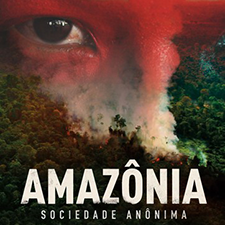 Amazônia Sociedade Anônima (Estevão Ciavatta, 2020, 73 min, use password ‘Amz@2021’ to access the film, festival exclusive!)
Amazônia Sociedade Anônima (Estevão Ciavatta, 2020, 73 min, use password ‘Amz@2021’ to access the film, festival exclusive!)
Due to the failure of the Brazilian government to protect the Amazon, Cacique Juarez Saw Munduruku leads an unprecedented union of indigenous and riverside people to save the forest confronting land grabbers and illegal deforestation.
Diante do fracasso do governo brasileiro em proteger a Amazônia, índios e ribeirinhos, em uma união inédita liderada pelo Cacique Juarez Saw Munduruku, enfrentam máfias de roubo de terras e desmatamento ilegal para salvar a floresta.
Nove Águas (Gabriel Martins and Quilombo dos Marques, 2019, 25 min)
Em 1930, Marcos e seu grupo de descendentes de escravizados saíram do Vale do Jequitinhonha rumo ao Vale do Mucuri. Fugindo da seca, da fome e da violência no campo, os quilombolas buscavam uma novo território para construir sua comunidade. Dos tempos do desbravamento aos atuais, a história de luta por água e terra protagonizada pelos moradores do Quilombo Marques, no Vale do Mucuri, em Minas Gerais.
Por tras da colina verde (Caio Ferraz & Paulo Pla, 2019, 29 min)
Apresenta a dura realidade enfrentada pelas comunidades camponesas da região do Alto Vale do Jequitinhonha – Nordeste de Minas Gerais – Brasil, diante da degradação socioambiental provocada pela implantação.
Arpilleras: Atingidas Por Barragens Bordando a Resistência (Adriane Canan, 2017, 97 min)
Conta a história de dez mulheres atingidas por barragens das cinco regiões do Brasil que, por meio de uma técnica de bordado surgida no Chile durante a ditadura militar, costuraram seus relatos de dor, luta e superação frente às violações sofridas em suas vidas cotidianas. A costura, que sempre foi vista como tarefa do lar, transformou-se numa ferramenta poderosa de resistência, de denúncia e empoderamento feminino.
Sem Clima: Uma República Controlada pelo Agronegócio (Alceu Luís Castilho and Fabrício Lima, 2017, 41 min)
De Olho Nos Ruralistas lançou seu primeiro documentário: “Sem Clima – uma República controlada pelo agronegócio”. Qual a relação entre a bancada ruralista e as mudanças climáticas? Ou, pensando no Acordo de Paris: com o Congresso que temos o Brasil será capaz de cumprir o acordo? Para tentar responder a essas perguntas o observatório entrevistou, durante sete meses, parlamentares e especialistas no tema. A equipe foi até Brasília conversar com os próprios ruralistas, mas acabou expulsa da sede da Frente Parlamentar da Agropecuária, uma mansão no Lago Sul. Por quê?
Para onde foram as andorinhas? (Mari Corrêa, 2016, 22 min)
O clima está mudando, o calor aumentando. Os índios do Xingu observam os sinais que estão por toda parte. Árvores não florescem mais, o fogo se alastra queimando a floresta, cigarras não cantam mais anunciando a chuva porque o calor cozinhou seus ovos. Os frutos da roça estão se estragando antes de crescer. Ao olhar os efeitos devastadores dessas mudanças, eles se perguntam como será o futuro de seus netos.
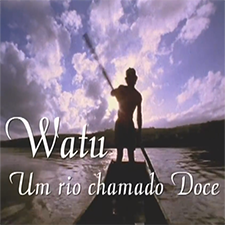 Watu: Um Rio Chamado Doce (Edilson Martins, 1996, 28 min, festival exclusive!)
Watu: Um Rio Chamado Doce (Edilson Martins, 1996, 28 min, festival exclusive!)
Mostra todo o histórico de degradação do Rio Doce – maior bacia hidrográfica da região sudeste -, desde o extermínio das nações indígenas ribeirinhas, Krenac, Botocudo e Maxakali, que chamavam o rio de Watu, à poluição no ciclo do ouro e pelas minerações posteriores.
Chico Mendes: um povo na floresta (Edilson Martins, 1989, 47 min, festival exclusive!)
Crônica da luta de Chico Mendes e seus companheiros, especificamente no Acre, contra a transformação da Amazônia. A produção deste documentário é de 1989, ano seguinte à sua morte.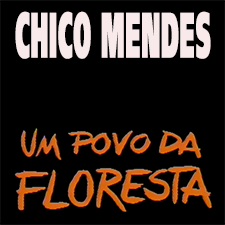
How to watch Watu and/or Chico Mendes for free during GEFF2021?
1. Log in or register at Tamanduá
2) Go to the Watu page and/or Chico Mendes page
3) Click on on ‘Watch’ (‘Assista’)
4) Add ‘AMERICAS’ below the question ‘Do you have a promotional coupon?’ (‘Possui um cupom promocional?’) and click ‘apply’ (‘aplicar’)
5) You can now watch the film(s) for free!
NB. The Tamandua website seems to be very slow and you could experience trouble accessing the film(s).
CANADA
VeraCity: The Fight for Tomorrow (Robin Bicknell and Megan Robinson, 2021, 43 min)
A documentary about Canada’s climate crisis. As the climate crisis continues to devastate the planet, experts and campaigners from across the country make a desperate call for change, focusing on where the problems are at their worst our cities.
Becoming Nakuset (Victoria Anderson-Gardner, 2021, 13 min)
Nakuset, like many thousands of first nation children, was stolen from her home and given in adoption to a family in Montreal. Becoming Nakuset traces how she discovered her own history and transformed her life by reclaiming her indigenous self.
Inendi (Sarain Fox, 2020, 44 min)
As part of Canada’s genocidal policies of land theft, cultural assimilation, and erasure, first nation children were forced to attend boarding schools, given away to white families and suffered other forms of dislocation and familial trauma. In Sarain Fox’s Anishinaabe culture, women lead the family. Her auntie, Mary Bell, is the oldest surviving matriarch, and she holds the family’s history. Mary is a residential school survivor who worked with the Truth and Reconciliation Commission to document the stories of other survivors. And now that she’s an elder, she is focused on how those stories will live on.
Invasion (Michael Toledano & Sam Vinal, 2020, 18 min)
In this era of ‘reconciliation’, Indigenous land is still being taken at gunpoint. Invasion is about the Unist’ot’en Camp, Gidimt’en checkpoint and the larger Wet’suwet’en Nation standing up to the Canadian government and corporations who continue colonial violence against Indigenous people. The Unist’ot’en Camp has been a beacon of resistance for nearly 10 years. The violence, environmental destruction, and disregard for human rights following TC Energy (formerly TransCanada) / Coastal GasLink’s interim injunction has been devastating to bear, but this fight is far from over.
Crude Power, University of Regina Journalism School, 2017, 47 min)
An unprecedented investigation into the connections between oil, money and influence in Saskatchewan revealing a powerful player that has few controls. This student-produced investigative current affairs program shines a light on the oil industries substantial influence on government policy and reveals who benefits and who is hurt. Filmed across the province by the School of Journalism, Crude Power exposes the tight connection between government and the oil industry and investigates the substantial impact on the citizens of the province.
CHILE
Sobre ruedas: productos sanos y regionales (Sophia Boddenberg (reporter), 2021, 4 min)
El consumo responsable es uno de los pilares de la protección individual y colectiva del medio ambiente. En Chile se está percibiendo ya ese cambio, que supone comprar orgánico y regional. El proyecto “La Huerta Móvil” lleva frutas y verduras de pequeñas chacras ecológicas de Paine a familias de la capital. Su fundadora distribuye con una red móvil los productos de los pequeños agricultores en Santiago y los vende también en un Eco Mercado capitalino.
Lawqa: Que el Parque Vuelva a Ser Parque (Raimundo Gomez, 2020, 33 min)
La Reserva Mundial de la Biosfera “Lauca”, esta siendo contaminada por relaves mineros abandonados y destruida por la explotación de la industria minera del bórax. Un destacado deportista, Gabo Benoit, explora en su bicicleta estas rutas solitarias del altiplano chileno, en busca de un espacio único y mágico donde practicar la pesca deportiva. En este viaje conoce a enigmáticos personajes que dan a conocer la vida de los últimos habitantes de la región, junto a las maniobras políticas que han convertido al Altiplano chileno, en un vertedero de desechos mineros a costa de sus maravillas naturales.
Mujeres en Zona de Sacrificio: Ventana (Rosa Angelini Figueroa, 2020, 13 min)
Este documental forma parte de un trabajo artístico y obra llamada “Hay una conspiración en la tierra”, un llamado de lucha en defensa de la madre tierra y los pueblos originarios, reúne música, artes escénicas y audiovisuales, la que desde el 2019 se ha presentado en Chile y Uruguay interviniendo diferentes espacios públicos en conflicto social, medioambiental y zonas de sacrificio. Se grabó en el contexto de una intervención y acción en apoyo a las mujeres en zonas de sacrificio de la localidad de Quintero-Puchuncaví, y surgió la necesidad de realizar un documental que evidenciara lo que estaban sufriendo para poder visibilizar su lucha y verdad.
European settlers in Chile (Tilman Lingner, 2020, 42 min)
The Chilean government lured European settlers to the New World in the 19th century, paying for passage, and granting them 40 hectares of land and loans to build a new life. Around 22 thousand Swiss came at that time, along with German, Italian and British settlers. They were escaping poverty in hopes of a prosperous life. But the state generously distributed land it did not actually own. The Chilean state took 90 percent of indigenous people’s territory and forced them into reservations. With the loss of their land, their culture and way of life disappeared. Once semi-nomadic, they now served the settlers as cheap labor in the fields and as domestic help. Today, this historic injustice has once again come to the fore.
Choyün: Brotes de la Tierra (Sebastián Pinto y Rosario López, 2020, 6 min)
Un corto animado Mapuche. En el sur de Chile, en la región de la Araucanía, en medio de montañas y bosques milenarios amenazados por la explotación forestal, una familia mapuche lucha por preservar su cultura y sus formas de vida. Tres generaciones de mujeres indígenas – abuela, hija y nieta – se encontrarán en una cruzada por defender la naturaleza de la industria extractiva y la grave crisis socioambiental que viven.
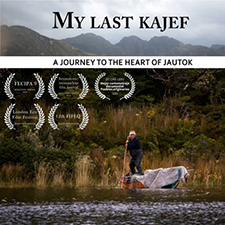 Mi Ultimo Kajef, Un Viaje al Corazon del Jautok (Matías Bravo Lara and Carlos Jose Reyes Raffo, 2019, 29 min, festival exclusive!)
Mi Ultimo Kajef, Un Viaje al Corazon del Jautok (Matías Bravo Lara and Carlos Jose Reyes Raffo, 2019, 29 min, festival exclusive!)
Two sisters accompany their father, a traditional Kawesqar fisherman, on the sea route where their ancestors fished, hunted and lived. As they go deeper into the Jautok they encounter beauty and mystery, symbols of this territory and of their ancestors… This journey is a call to protect the Kawesqar territory and the life found there.
35 Anos Muriendo (Colectivo Salud en Movimiento, 2019, 13 min)
Entre los años 1984 y 1985, en plena dictadura militar, se importaron desde Suecia 20 mil toneladas de un material rotulado como “barro con contenidos metálicos”de la empresa Boliden. El material fue importado por la empresa Promel y depositado en un sitio fiscal conocido como el Sitio F. Años más tarde, en los alrededores del este sitio se construyeron dos poblaciones cuyos habitantes se vieron expuestos directamente y sin saberlo a un foco crítico de contaminación por polimetales. Durante el 2017 y 2018 como Colectivo Salud en Movimiento fuimos testigos de lo que sigue aconteciendo en Arica con respecto a la contaminación medioambiental por los llamados ’polimetales’. Buscamos viralizar este corto para dar a conocer, recordar y presionar a las autoridades pertinentes a tratar las inquietudes de la gente.
Blybarnen: Los Ninos de Plomo (Lars Edman and William Johansson Kalén, 2009, 57 min)
Un documental sobre la exportación de residuos tóxico de Suecia hasta Chile y su almacenamiento en la región de Arica. La compañía de mineros metalúrgicos sueca Boliden Metal exportó a Chile unas 20 toneladas de “barros metálicos” entre 1984 y 1986. Los 707 niños enfermos denuncian a la empresa sueca Boliden. Un grupo de abogados suecos presentó hoy ante el juzgado de Skellefteå (norte de Suecia) una demanda contra la compañía minera Boliden por los daños a la salud causados por las emanaciones de residuos tóxicos enviados hace tres décadas a la localidad chilena de Arica.
COLOMBIA
Chagra, las huerta circulares de Putumayo (Felipe Abondano (reporter), 2021, 4 min)
Las mujeres indígenas de la Amazonia colombiana preservan y transmiten los saberes tradicionales de cultivos circulares o chagras, un sistema de permacultura ancestral. Se autodenominan “mujeres sabedoras” y buscan garantizar de forma ecológica la seguridad alimentaria de sus familias.
Ruta Chingaza: Bike packing for Conservation (Rugile Kaladyte, 2020, 34 min)
Legendary ultra-endurance cyclist Lael Wilcox, Joe Cruz, and the filmmaker Rugile Kaladyte traveled to the Colombian capital of Bogota, in partnership with Conservation International, Wahoo, and Bikepacking.com, to launch the Bikepacking for Conservation Program. The project was designed to explore and scout a bikepacking route that would connect the bustling metropolis of Bogota with rural communities and the Chingaza National Park. The resulting route — Ruta Chingaza — will help cyclists connect to nature and better understand the ecosystems upon which life and livelihoods in this area depend.
Meet a Forest Protector (WWF, 2020, 7 min)
In the municipality of Calamar, WWF-Colombia is working with a group of local farmers and community leaders who have formed themselves into a local environmental group – the forest protectors. Their goal is to stop deforestation in the region, protect and restore remaining forest areas and help provide alternative, sustainable livelihoods to local people in the region. Hear from Marisela who explains why looking after the forest is so important.
Colombia: basura en la selva (Felipe Abondano (reporter, 2020, 4 min)
La presión ciudadana obligó a las autoridades a suspender las actividades de relleno sanitario. Las comunidades esperan que la situación mejor, pero el perjuicio ambiental en sus fuentes de agua ya es evidente, y podría ser permanente.
Sangre y Tierra: Resistencia Indigena del Norte del Cauca (Ariel Arango Prada (2016, 43 min)
La resistencia del pueblo indígena Nasa del Norte del Cauca durante la “Liberación de la Madre Tierra” en el 2015 y el 2016, proceso de recuperación de territorios ancestrales hoy en manos de los grandes ingenios azucareros y principales productores de etanol en Latinoamérica. Así mismo, evidencia la defensa por su autonomía, la jurisdicción especial indígena, la movilización social y la conservación de diversas manifestaciones de su cultura ancestral. Un documento de memoria y una reflexión crítica sobre el proceso de paz en Colombia.
El Mal Vecino (Bianca Bauer, 2016, 20 min)
Cuenta la historia de Moisés Daniel Guette Uriana, un niño Wayúu de dos años de edad que vive al lado de la mina El Cerrejón en La Guajira, Colombia, y sufre enfermedad respiratoria.
Orgía de la Minería (Censat Agua Viva, Amigos de la Tierra Colombia y Ocopolis, Observatorio Colombiano de Políticas Públicas, 2015, 42 min)
La política minero energética en Colombia ha impulsado el extractivismo en todo el territorio nacional, con numerosas empresas trasnacionales y proyectos mineros; las comunidades indígenas, campesinas y afrodescendientes son las más afectadas por esta dinámica extractiva. Desde testimonios diversos se hacen evidentes las transformaciones territoriales y los graves e irreversibles impactos sociales y ambientales generados por la minería, así como la preocupación por las situaciones de conflicto, desplazamiento, violación de derechos humanos y despojo territorial que se deriva de la implementación de estos proyectos.
Aluna – The Kogi (Kogi, Alan Ereira, 2012, 88 min)
The Kogi have made this documentary to help us understand how to avoid the destruction of the world that they are trying to protect, and of ourselves. This 2012 feature-length documentary film entitled Aluna (meaning ‘conscience’) is the sequel to the 1990 BBC documentary From the Heart of The World: Elder Brother’s Warning. The first documentary showed an ancient Kogi tribe civilisation (the Elder Brother) who emerge to offer their concern for people of the modern world (Younger Brother). Younger Brother is urged to change or suffer environmental disaster. After offering the warning the Kogi retreat to their community hidden in the mountains of the Sierra Nevada de Santa Marta, Colombia. In this second documentary, the Kogis have re-emerged, realising that the importance of their warning had not been grasped. As well as warning Younger Brother they have decided to share their secret sciences in the belief that sharing these sciences will share their burden of changing the world for the better.
COSTA RICA
Biodiversos en Centroamerica (Ernesto Jara Vargas, 2020, 4 min)
Cincuenta mil familias de Centroamérica han recibido el apoyo técnico y financiero de ACICAFOC, una organización cuyo objetivo es fomentar la biodiversidad y garantizar la soberanía alimentaria de las poblaciones rurales. En Costa Rica, Víctor Vega y su esposa son un ejemplo.
What Indigenous Tribes can Teach us about Climate Change (Bianca Graulau, 2019, 6 min)
The Bribri are indigenous people of Costa Rica and they have an important message for the rest of us about our planet.
CURACAO
Curacao and Climate Change (Xenia Böttcher (reporter), 2020, 13 min)
Julieta is 14 years old and rescues turtles as a volunteer on Curaçao in the Caribbean. The island off the coast of Venezuela is feeling the impact of climate change and pollution. Julieta is moved to take action. The teenager is fearless when it comes to saving animals. Turtles are an endangered species. Warming oceans are fueling algae growth, as are fertilizers flushed into the sea from Brazil. The turtles come up for air, and get entangled in the bloom. Julieta and her fellow activists from an island conservancy group are committed to saving as many turtles as they can. Their efforts are backed by veterinarian Odette Doest and her emissary for conservancy, Bob the flamingo.
Curacao’s Coral Challenge – Reviving the Rain Forests of the Sea (Pace University Students, 2015, 27 min)
The challenge is finding ways to move beyond an economy based for nearly 100 years on refining Venezuelan oil to a more diverse one including substantial tourism — but doing so without harming the still-vibrant reefs ringing parts of its coast.
Curacao’s Inconvenient Truth: Isla oil refinery (Zjeitu Films, 2011, 3 min)
Curacao’s ISLA oil refinery pumping toxins into the air.
DOMINICAN REPUBLIC
Avocado Rise (Bernat Mestres, 2020, 11 min)
The unsustainable year-round global consumption of avocados has led to monocrop plantations, massive deforestation whereby entire forests are being replaced by avocado farms, water depletion, the displacement people from their land and the loss of other forms of agriculture. Sierra De Bahoruco, in the Dominican Republic listed as a Biosphere Reserve by Unesco is under threat from avocado cultivation and several species and natural resources have become endangered in one of the most unique forests in the world.
Isla de Plastico (José María Cabral, 2018, 85 min)
Un documental, motivado por la ola de plástico que afectó la costa de Santo Domingo, ofrece una mirada realista de cómo estos dos países, que comparten una isla, se convierte “en una isla de plástico”. Llama la atención sobre la necesidad de un cambio de hábitos de consumo sobre el plástico, que representa 580 millones de libras cada año en desechos de este material en República Dominicana.
DOMINICA
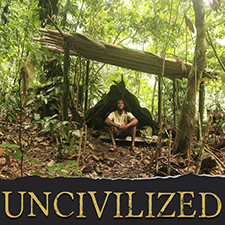 Uncivilized (Michael Lees, 2019, 72 min, festival exclusive!)
Uncivilized (Michael Lees, 2019, 72 min, festival exclusive!)
Disenchanted by the modern world, Michael Lees heads into the forest of Dominica with some basic survival gear, religious texts and a camera. “Why did man ever leave the forest? And what makes for a good life?” Just as he starts to acclimatize to his new life – the unexpected; Category 5 Hurricane Maria, one of the top ten strongest Atlantic hurricanes in history, makes a direct landfall. Michael is caught out in the open in a palm leaf and bamboo hut. With the nation in ruins, the forest destroyed, and essential services knocked out islandwide, the entire country must now return to a past way of life if they hope to survive.
ECUADOR
7 Hectares Back (Dorata Mazur and Robert Migas, 2019, 10 min)
30 years ago an accountant and orchid lover quit his job at a bank to fulfill his dream of restoring forest habitat in his native Ecuador. He brought plants from the Ecuadorian jungle and planted them in a piece of pasture. For years Omar Tello was viewed as eccentric for trying to restore an ecosystem rather than raising cattle.
A’i Kofan: The People (Ceibo Alliance, 2018, 12 min)
Kofan leader Emergildo Criollo was a young boy when the oil company Texaco ( now Chevron) arrived by helicopter into his peoples’ ancestral territory in the Ecuadorian Amazon back in the 1960s. Their large territory, which extended from the foothills of the Andes mountains deep into the Amazon basin in modern-day Ecuador and Colombia is now reduced to a fraction of the size and is under constant threat of extractive industries. Emergildo fought the company for decades after what became one of the worst oil-related disasters in history. Now, he has returned to his homeland to build rainwater catchment systems for communities across the upper Amazon as a solution for communities whose water sources have been contaminated by this catastrophic and on-going situation. Emergildo Criollo is a founding member of our indigenous partner organization, Ceibo Alliance.
Ome: Tales from a Vanishing Homeland (Raul Paz Pastrana, 2018, 30 min)
Filmed in the heart of the Ecuadorian Amazon in the Yasuni biosphere, “Ome: Tales From a Vanishing Homeland” offers access to the unique and ancient way of life of the Huaorani, one of Ecuador’s most isolated indigenous groups. OME explores the intricacies of the Huaorani way of life, highlighting their connection to land and family, while raising questions about their future survival as oil companies encroach upon Ome, their homeland.
The Last Guardians (Joe Tucker and Adam Punzano, 2017, 44 min)
Made with the indigenous Sàpara and Kichwa tribes of the Ecuadorian Amazon, exposes the threats they are facing from the oil industry. The film also sheds light on their philosophy and way of life, illustrating what the world stands to lose if their rights are not respected. Now, more than ever, the global community can learn from indigenous knowledge and wisdom in its battle to conserve the planet. Becoming, once more, guardians of the land which gives us life.
Crude – The Real Price of Oil (Joe Berlinger, 2009, 104 min)
Three years in the making, Crude tells the epic story of one of the largest and most controversial legal cases on the planet: the infamous $27 billion “Amazon Chernobyl” lawsuit pitting 30,000 rainforest dwellers in Ecuador against the U.S. oil giant Chevron.
The Curse of Copper (Jenny Sharman, 2006, 34 min)
A Canadian mining company is in the process of obtaining the rights to mine copper in one of the world’s biological hotspots – a pristine cloud forest in the heart of the Andes Mountains of Ecuador. Local communities strongly oppose the mine as it will ruin their livelihoods and destroy their environment, which is home to many endangered species. The mining company is ignoring their heart-felt pleas and pushing forward with the project, with disastrous consequences.
Allpamanta, Kawsaymanta, Katarishun / Por la Tierra, por la vida, levantémonos (Alberto Muenala, 1992, 45 min)
Marcha realizada en abril de 1992 por la OPIP y organizaciones de las nacionalidades indígenas de la Amazonía Ecuatoriana en demanda de legalización de sus territorios ancestrales.
GUADELOUPE
Natures humaines: découvrons la mangrove (Ministère de la transition écologique, Gouvernement français, 2021, 11 min)
C’est en Guadeloupe que nous emmène ce nouvel épisode de la série Natures humaines, pour nous faire découvrir un écosystème très particulier : la mangrove. Interface entre terre et mer, la mangrove est encore méconnue et peut faire l’objet d’idées reçues. Pourtant, son rôle de barrière naturelle est capital, puisqu’elle protège le littoral mais aussi les infrastructures et la population contre les risques naturels et les événements climatiques! Elle a aussi un rôle de nurserie pour de nombreuses espèces.
GUATEMALA
Garbage Dump From Hell (RT Documentary, 2021, 9 min)
In Guatemala City’s zone 3 district, there’s a monstrous Basurero. It’s probably the closest you can get to Hell on this Earth. Basurero is filthy and toxic and unstable, but people still swarm to it to try and earn a living by trawling through the trash, in search of some treasure to sell. Among the garbage sorters are 1,000 children. It’s their workplace and their playground. Some stay here all their lives, never earning enough cash to escape. Zone 3’s garbage dump is full of death traps. Landslides regularly sweep everything away, and many are never found. Guatemala’s cruelest criminal gang operates here. Its members are trapped too.
Minería y corrupción, el caso de San Rafael Las Flores (Colectivo Ecologista Madre Tierra, 2016, 27 min)
Los impactos más significativos en el contexto social y ambiental ocasionado por el proyecto minero el Escobal, ubicado en el municipio de San Rafael Las Flores, departamento de Santa Rosa. Sirva el presente material audiovisual como ejemplo de las dignas luchas de resistencia “no violenta” ante la imposición del modelo extractivista en Guatemala. Que la voz de las y los defensores de derechos sea divulgado hasta que sean escuchadas sus demandas por el Estado de Guatemala.
Defensora (Rachel Schmidt, 2013, 39 min)
Mayan Q’eqchi’ resistance against mining in Guatemala taking the unprecedented step of seeking Justice against a Canadian Mining company in the Canadian court system, for alleged abuses that include murder, rape and forced evictions.The story is set along the shores of Lake Izabal in the community of El Estor where a nickel mining company has operated for over 50 years. Tensions run high against a backdrop of pro and anti-mining camps, violence and forced evictions. The film takes audiences into the lives of defenders in the resistance who struggle to reclaim their ancestral lands and seek justice in Canadian courts for alleged human rights violations.
Sipakapa no se Vende (Álvaro Revenga, 2005, 56 min)
13 aldeas del municipio de Sipakapa realizaron una consulta de vecinos para opinar sobre el proyecto de explotación minera que la empresa Montana estaba instalando en sus territorios. La respuesta mayoritaria fue un no rotundo, un rechazo generalizado que se hizo patente en los listados de papel y en las asambleas donde la gente votó. A raíz de ese acto, este pequeño pueblo se ha vuelto emblemático por su valor y empeño, lo cual le ha generado amplia solidaridad. La empresa Montana ha empleado varias estrategias para restarle validez a ese proceso. El chantaje y el manejo de la información han sido algunos de los medios de que se ha valido para lograr sus objetivos. En contra de la voluntad popular y pasando sobre tratados internacionalmente aprobados, la compañía inició operaciones a finales del año pasado.Los sipakapenses se oponen a que la empresa opere en su territorio debido al deterioro ambiental que causa, al utilizar químicos que contaminan el entorno y las fuentes de agua, con consecuencias nefastas para la salud.
GUYANA
Cry of the Sacred Marutu Tao and its Defenders (South Rupununi District Council (2021, 13 min)
Marutu Tao (Marudi Mountain) is one of a network of mountains that are a core component of Wapichan cultural heritage, but mining activities on it are threatening the environment, our cultural heritage, and our way of life.
The Barima-Mora Passage (Alex and Victoria Arjoon, 2020, 16 min)
Guyana’s most intact mangrove ecosystems are found within a very special place in Region One, known as the Barima-Mora Passage. Beyond its rich mangrove population, this area is home to a number of IUCN red listed species, rich biodiversity, and incredible indigenous culture. This documentary aims to raise awareness to the urgent need to protect such ecosystems, that are ultimately essential to ensuring that Guyana’s people and coastal biodiversity remain resilient to the threats of climate change.
Inside Reel 2 ep. 4 – Conservation in Guyana’s Savannahs (Victoria Arjoon, 2020, 11 min)
The REEL Team examines conservation efforts in the South Rupununi and the potential threats faced by biodiversity in the dry savannahs. To end a phenomenal journey the team makes their way to the top of two of the region’s well known mountains.
Coast Land (Alex & Victoria Arjoon, 2020, 26 min)
The vulnerability of the country’s coastal region which is the home to the majority of the population. It examines the effects of rising sea levels and cyclical erosion which results in massive overtopping and disruption of livelihoods.
Carbon Bomb (Shane Thomas McMillan, 2020, 48 min)
120 miles off the coast of Guyana lies one of the biggest fossil fuel discoveries of our time: 13.6 billion barrels of oil and 32 trillion cubic feet of natural gas are the current estimate for known reserves in the entire offshore basin. ExxonMobil is the leading fossil fuel company in this massive drilling program, which has benefitted from Guyana receiving considerable budget support and technical assistance from the World Bank. Together, the two, along with a dozen other companies, risk turning Guyana into the world’s latest victim of the oil curse, further fueling the global climate crisis.
HAITI
Men Sa Lanmè Di: Thus Spoke the Sea (Arnold Antonin, 2020, 49 min)
The Sea shares her story with the Haitian people. Wave after wave, the Sea showcases her riches, reveals her mysteries, and raises the alarm. From the excessive use of her resources to the consequences of climate change and pollution, the Sea narrates her own adventures through its different shades of blue. The Sea gives a frank and candid depiction of the challenges and opportunities we must seize before it’s too late.
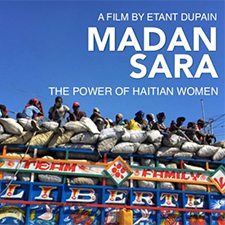 Madan Sara (Etant Dupain, 2019, 50 min, festival exclusive!)
Madan Sara (Etant Dupain, 2019, 50 min, festival exclusive!)
If Haiti has continued to resist and exist, it is in large part because of the persistence, discipline, and vision of valiant Haitian women. A particular group of women’s work is at the heart of Haiti’s informal economy. Who are they? They are known as the Madan Sara. This film tells the story of the Madan Sara’s tireless work, day in and day out, as they ensure that food in Haiti makes its way to market. Despite facing intense hardship and social stigma, Madan Sara manage to put their children through school, provide housing for their families, and ensure a better life for generations to come.
HONDURAS
La Lucha Sigue (Sam Vinal, 2021, 66 min)
In Honduras, the most dangerous place in the world to be a land defender, the Lenca and Garífuna people are not backing down. They are fighting to uphold their rights and Indigenous and Black cultures in the face of state backed megaprojects and narco-traffickers who seek to assassinate them, destroy their lands, and erase their existence.
Guardiana de los ríos (Jennifer Avila, 2016, 66 min)
Seis comunidades en defensa de los ríos. Decenas de defensores amenazados a muerte. Todos y todas unidos por el espíritu de la Guardiana de los ríos, Berta Cáceres, líder social y ambiental asesinada en marzo de 2016. Este documental nos traslada al interior de Honduras, uno de los países más peligrosos para defender los bienes naturales, gobernado por una idea de desarrollo extractivista que se enfrenta a la cosmovisión de los pueblos y no les permite decidir sobre su entorno.
JAMAICA
How a Sovereign Group in Jamaica is Fighting an American Mining Company (Vice Global News, 2021, 36 min)
Jamaica was once the world’s leading exporter of bauxite, which is the ore from which aluminum is made, but decades of mining have taken a toll on the land and the people. With reserves depleted, the government is now pushing to move mining operations into the most ecologically sensitive part of the island known as Cockpit Country. The people of Cockpit Country fought off the British in the 1700s and now they’re conjuring the warrior spirit of their ancestors to take that fight to the mining companies.
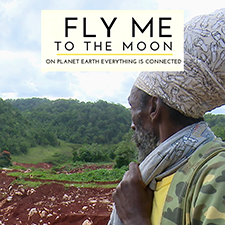 Fly Me To The Moon (Esther Figueroa, 2019, 123 min, festival exclusive!)
Fly Me To The Moon (Esther Figueroa, 2019, 123 min, festival exclusive!)
A journey into the unexpected ways we are all connected on Planet Earth, by following aluminum – the metal of modernity – around the world and into space. We travel for over one hundred years, visiting places as far flung as the Moon, Jamaica, India, Suriname, Canada, Cuba, Japan, Hungary, Iceland, Australia, Vietnam, the United States of America, encountering along the way human triumphs, technological innovations, multiple wars, societal upheavals, environmental devastation. And in the urgent here and now of the climate crisis, the film challenges us to to think about the consequences of our consumption, to reimagine the ways in which we live, and to change our material culture and political economy that is destroying the planet we all depend on.
#ClimateStrike_SaveCockpitCountry (Esther Figueroa, 2019, 10 min)
In Jamaica, as part of Global Climate Strike on 20 September 2019, we held Save Cockpit Country Day in Stewart Town Trelawny to bring attention to the urgency of the climate crisis. The essential role of Cockpit Country forests in protecting Jamaica from the impacts of global warming. And to call for No Mining in Cockpit Country and Jamaica. Stewart Town is in Special Mining Lease 173, 8,335 hectares of land the government of Jamaica has granted to Noranda Jamaica Bauxite Partners to mine.
I Live for Art – An Ecocide Romance (Esther Figueroa, 2013, 13 min)
In Jamaica, the Palisadoes Shoreline Rehabilitation and Protection Works Project, began in 2010 and ran out of money in 2013 ending in breach of the environmental requirements of the project. Funded via a loan to the Jamaican Government from the China Development Bank with the contract going to China Habour Engineering Company Ltd. the actual cost of the approximately 4 kilometers of road works is estimated at $70 million US dollars which is over $70 Billion JA dollars. This does not include repayment of the loan. One wonders if this is the most sensible use of funds in an impoverished and indebted country like Jamaica.
Cockpit Country Is Our Home (Esther Figueroa, 2012, 28 min)
Cockpit Country is Jamaica’s most important karst landscape. Through breathtaking, intimate footage you get to experience Cockpit Country’s environment and the animals found there: Jamaican bats; Jamaican Slider Turtle; Jamaican Laughing Frog; Jamaican Yellow Boa; a variety of birds including Doves, Pigeons, Yellow and Black-billed Parrots, Olive-throated Parakeets, Hummingbirds, Jamaican Tody, and Jamaican Woodpecker; Snails; and Anancy, the Golden Spider, and understand the interconnected ecology of Cockpit Country, the role of trees and plants such as Bromeliads.
Cockpit Country Voices from Jamaica’s Heart (Esther Figueroa, 2007, 24 min)
In 2006, the then Government of Jamaica permitted two prospecting licenses for mining in the Cockpit Country, the interior Western section of the island of Jamaica. Cockpit Country is one of two remaining areas in Jamaica with significant areas of healthy forests. It is the source of water for five parishes, a sanctuary for endemic, rare and endangered species, the home of the Western Maroons and a place of important cultural and historical significance for Jamaicans. People of all ages and walks of life express their absolute rejection to mining in Cockpit Country and their commitment to protecting the entire region.
MARTINIQUE
Martinique Protesters to Seek Accountability for Pesticide Poisoning (Homara Choudhary (reporter), 2021, 3 min)
Thousands of protesters in the French overseas territory of Martinique have called on judges not to throw out a long-delayed case on pesticide poisoning. Chlordecone was used for decades on the Caribbean island – even after it was banned on the French mainland. It has been blamed for high levels of cancer in the region.
Martinique, Guadeloupe Suffer Effects of Toxic Chemical (Shirli Sitbon (reporter), 2019, 2 min)
The French Caribbean islands of Martinique and Guadeloupe have been suffering the consequences of a chronic pollution problem and today French lawmakers designated the state as the main culprit. French President Emmanuel Macron has described the use of pesticide Chlordécone for many years as an ‘environmental scandal’.
En Martinique, le chlordécone un “scandale environmental” (L’express, 2018, 2 min)
Le chlordécone, pesticide interdit dès 1977 aux États-Unis mais utilisé jusqu’en 1993 aux Antilles par les producteurs de bananes, est toujours présent dans les sols. Emmanuel Macron a annoncé jeudi, au premier jour d’un déplacement aux Antilles, que l’État devait “prendre sa part de responsabilité” dans la pollution au chlordécone et “avancer sur le chemin de la réparation” de ses ravages.
How a Toxic Pesticide Poisoned French island of Martinique (Patrick Lovett and Gaëlle Essoo, 2018, 6 min)
From 1972 to 1993, more than 300 tons of chlordecone were sprayed on the banana plantations of Martinique and Guadeloupe, in the French Caribbean. The highly toxic pesticide has since generated a health and environmental crisis. Even though chlordecone has not been used for 25 years, its toxicity remains in the food chain. Today, the two islands have the highest rates of prostate cancer in the world and premature births are four times higher than the national average.
Europe’s Islands: Martinique, a Precarious Paradise (Catherine Nicholson (2018, 17 min)
In part two of our European islands special, come with us to Martinique. The small island is located 8,000 km from Brussels and is one-thirtieth the size of Belgium. But as a French overseas department, it’s also part of the European Union. In this Caribbean paradise, we lift the lid on a 30-year pesticide scandal that’s responsible for one of the highest rates of prostate cancer in the world and a rate of premature births four times higher than in mainland France.
MEXICO
El Tema (6 part series, La Corriente del Golfo, 2021)
La serie web de seis cortos documentales narra los temas fundamentales de la crisis climática en México a través de las historias y experiencias de activistas medioambientales, defensorxs de derechos humanos, comunidades indígenas, académicxs y organizaciones de la sociedad civil. Dos testigos, el actor, productor y director Gael García Bernal, y la escritora y lingüista Yásnaya Águilar, hilan las diferentes historias y reflexionan sobre el impacto de cada problemática.
Agua (2021, 12 min) | Aire (2021, 12 min) | Carbon (2021, 12 min) | Energia (2021, 13 min) | Oceanos (2021, 12 min) | Alimento (2021, 11 min)
Misioneros del Temporal (Jimena L. Paz, 2019, 27 min)
El video documental “Misioneros del temporal, Guardianes de la lluvia en el oriente de Morelos” nos habla sobre un grupo de campesinos que realiza rituales de petición de lluvias en los Municipios de Tetela del Volcán, Hueyapan y Ocuituco. En el altiplano central de México, en las faldas del volcán Popocatépetl, un grupo de campesinos originarios de Morelos, ha asumido la misión de trabajar por el temporal y proteger los sitios sagrados de su región de las fuerzas que los perturban y provocan desequilibrios en el clima y la naturaleza. De no hacer esta labor ritual, heredada desde sus antepasados, ellos creen que la lluvia y el alimento podrían escasear para el mundo entero.
Somos Valientes (5 episode series, Lydia Cacho, 2019, 75 min)
Iniciado en el año 2016 por la periodista y activista Lydia Cacho y co-creado por la productora y activista Marcela Zendejas, Somos Valientes es un proyecto educativo multimedia centrado en el modelo de educación para la paz. Durante 2 años, Lydia viajó junto con un equipo de documentalistas y expertas en derechos humanos por la República Mexicana entrevistando a niñas y niños sobre lo que significa ser valientes, sobre la paz, el amor, el trabajo y la esperanza.La primera temporada de la docuserie web incluye 5 episodios que suceden en los estados de Chiapas, Ciudad de México, Sinaloa, Yucatán y Jalisco.
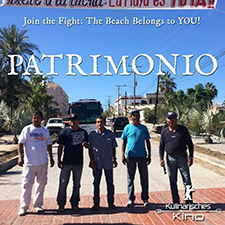 Patrimonio (Lisa F Jackson and Sarah Teale, 2018, 85 min, festival exclusive!)
Patrimonio (Lisa F Jackson and Sarah Teale, 2018, 85 min, festival exclusive!)
A multi-billion dollar American development is poised to engulf a small coastal community in Mexico with a mega hotel/condo complex. But local people are banding together to save their way of life and the delicate ecosystem on which they all depend.
Recuperando el Paraiso (José Arteaga and Raphael Camacho, 2017, 73 min)
In the context of war against organized crime, the community of Santa María Ostula survives in a climate of violence and plundering. Through the creation of self-defense groups, the residents seek to return and rebuild their community.
El mineral o la vida (José Luis Matías Alonso, 2015, 35 min)
La historia de resistencia y lucha de los pueblos originarios del estado de Guerrero, México., ante proyectos extractivos capitalistas del siglo XXI. Son los Na Savi,los Me ´Phaa, los Nahuas que defienden su tierra y territorio de las grandes mineras Canadienses e ingleses que son apoyadas por el gobierno federal.
Minas y Mentiras: La verdad sobre el proyecto minero en San José del Progreso (Roberto Stefani, 2011, 35 min)
La lucha de las comunidades del Valle de Ocotlán, Oaxaca, por defender sus territorios y en contra de la represión del Estado. En el estado de Oaxaca existe una gran diversidad de minerales. El marco jurídico actual, en particular la Ley Minera, es desventajoso para los pueblos y comunidades indígenas, pues no se establece ningún mecanismo de consulta a su favor para el otorgamiento de concesiones mineras.
Voces del subterráneo (Boris Goldenblank, Blanca Álvarez Pulido, Iván López Barba and Yordi Capó, 2010, 70 min)
El 19 de Febrero de 2006, en el norte del Estado de Coahuila, estalló la mina de carbón Pasta de Conchos, dejando atrapados a 65 mineros. La empresa, dueña de la mina declara a todos los mineros muertos. Los familiares de las víctimas inician una larga lucha para el rescate de los cuerpos mientras las investigaciones permiten suponer que una parte de los mineros atrapados no fallecieron en el momento de la explosión y esperaban ser rescatados.
PARAGUAY
El Cultivo del Ka’a en Paraguay (Ana López Escudero (reporter), 2019, 26 min)
Las mujeres de Tavapy han demostrado algo que parecía imposible en Paraguay: se puede plantar cara a la sojización con la yerba mate, una especie arbórea que ya conocían los guaraníes. Con el cultivo de ka’a, su nombre en guaraní, y con el apoyo de WWF, evitan la deforestación del Bosque Atlántico. El procesado de la yerba para infusión o en polvo para la gastronomía es su forma de sustento.
Indigenas Urbanos en Paraguay (Miguel Armoa, 2017, 75 min)
Abarca de manera representativa a las poblaciones indígenas que migraron, específicamente en Asunción, Limpio, Luque y Mariano Roque Alonso. Relata acerca de las modalidades de inserción de los indígenas y las condiciones socioeconómicas, políticas y culturales de los diferentes pueblos que viven en contextos urbanos. También describe las características particulares y las condiciones en que viven los indígenas en Asunción y Gran Asunción y detalla las causas de la migración y la inserción de las familias indígenas en estas zonas.
PERU
La Defensa del Ultimo Valle (Isaac Risco (reporter), 2021, 3 min)
El valle del río Lurín es considerado el último pulmón verde de la capital de #Perú, una ciudad ubicada en medio del desierto. Muchos activistas se oponen ahí a un proyecto urbanístico que amenaza con acabar con ese territorio verde y sus fértiles huertos.
El mar no se mancha (MOCICC Perú, 2020, 8 min)
Para los pescadores artesanales de Piura, el Mar es vida. Les provee comida y admiran su fuerza, su biodiversidad. La producción narra la oposición frente a los gigantes del petróleo que tienen lotes en el mar peruano y han emprendido acciones de exploración en toda la costa norte.Conoce el significado del buen vivir de los pescadores del norte peruano.
Historias de Água (Juan Manuel Torres-Solari Injoque and Gabriela Delgado Maldonado, 2017, 53 min)
La vulnerabilidad de las fuentes de agua y de los ecosistemas que la generan en un contexto de cambio climático y muestra las repercusiones de la contaminación producida por la actividad minera y su impacto en el ambiente y la salud de las personas que viven en aquellas zonas y que pagan el precio de vivir en un país al que se le denomina como minero.
Uchunya – ¿Y dónde vamos a vivir? (Comunidad shipiba de Santa Clara de Uchunya, 2016, 12 min)
En el territorio del pueblo Shipibo en la Amazonía Peruana, la comunidad indígena de Santa Clara de Uchunya está enfrentando la devastación de sus bosques y ríos a ncestrales, debido a la expansión agresiva de palma aceitera. Dicha plantación pertenece a Plantaciones de Pucallpa S.A.C. que forma parte de un grupo de empresas controlado por Dennis Melka. Los esfuerzos de la comunidad para lograr el reconocimiento de sus derechos territoriales abarcan más de 30 años y ahora han llegado a un punto crítico. El caso legal de Santa Clara de Uchunya es emblemático, puesto que su resultado tendrá consecuencias trascendentales para el futuro de la Amazonía Peruana y sus Pueblos Indígenas.
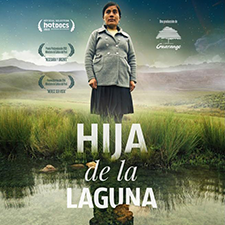 Hija de la Laguna (Ernesto Cabellos Damián, 2015, 88 min, festival exclusive!)
Hija de la Laguna (Ernesto Cabellos Damián, 2015, 88 min, festival exclusive!)
La lucha de Nélida Ayay Chilóny, una campesina de Cajamarca, y las comunidades campesinas por conservar una laguna bajo la cual se encuentra un rico yacimiento de oro codiciado por Yanacocha, la empresa minera más grande de América del Sur.1 Nélida es que se comunica con la naturaleza, especialmente con las lagunas de las que dependen la vida de su comunidad.2 La empresa cuenta con el apoyo del Gobierno del Perú, a pesar de que este proyecto destruirá las lagunas.
PUERTO RICO
The Young Puerto Ricans Returning to the Land (Bianca Graulau, 2021, 14 min)
Puerto Rico imports approximately 85 percent of its food. How did we get here? In one word: colonization.
The Colonial Politics of US-Puerto Rico Relationship (Bianca Graulau, 2021, 10 min)
As a possession of the United States, Puerto Rico is under the absolute powers of Congress. Director Bianca Graulai tells you about times in history, past and present, when that has become evident.
Rich People are Moving to Puerto Rico (Bianca Graulau, 2021, 13 min)
Act 22 incentivizes the materially wealthy to relocate to Puerto Rico. Coastal towns are getting gentrified and Puerto Ricans are worried they will get priced out.
Protected Land in Puerto Rico (Bianca Graulau, 2021, 15 min)
Protected land in Puerto Rico is up for sale. Puerto Ricans depend on that land for food and water and it could be at risk of development. Help us investigate.
Impact with Gal Gadot Episode 3: The Ripple Effect (Vanessa Roth and Ryan Palotta, 2021, 12 min)
San Juan, Puerto Rico, U.S.A.: Discover the inspiring story of Arianna, a 19-year-old woman leading a team of college students who invented a water filtration system. They are giving the people of Puerto Rico access to clean, drinkable water after years of living with toxic water after the devastation of Hurricane Maria in 2017 and lack of government assistance.
What Happens when the US Approves Money for Puerto Rico (Bianca Graulau (2020, 8 min)
One community has been waiting 13 years for the money authorized by Congress that would help prevent sewage water from flooding their homes.
Sea Level Rise is Swallowing Puerto Rico’s Beaches (Bianca Graulau, 2019, 5 min)
Homes and buildings are being abandoned because the sea has reached them. Scientists say climate change, coastal construction, and neglect of the island’s coasts are to blame for the beach erosion.
Landfills in Puerto Rico are Filling Up (Bianca Graulau, 2019, 8 min)
We tried to not create any waste during our weekend trip to Puerto Rico because the island is facing a garbage crisis
What is Monsanto Doing in Puerto Rico (Dena Takruri (reporter), 2019, 15 min)
Dena Takruri gets rare access inside Monsanto’s Puerto Rico operation, where they get huge tax breaks to test and grow GMO seeds. Meanwhile, thousands of plaintiffs across the U.S. are suing the corporation, claiming that its weedkiller Roundup has caused cancer. In Puerto Rico, locals are blaming Monsanto for getting them sick.
The US Navy’s Toxic Playground (Dena Takruri (reporter), 2019, 12 min)
Vieques, Puerto Rico: The island that was used by the U.S. Navy as a training ground for war for 60 years. Today, half of Vieques is a toxic Superfund site because the Navy is still cleaning up their leftover bombs – by literally exploding them.
SURINAME
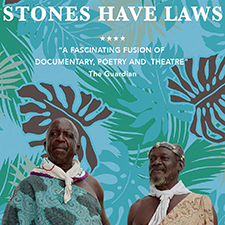 Dee Sitonu a Wet (Lonnie van Brummelen, Siebren de Haan and Tolin Erwin Alexander, 2018, 100 min, festival exclusive!)
Dee Sitonu a Wet (Lonnie van Brummelen, Siebren de Haan and Tolin Erwin Alexander, 2018, 100 min, festival exclusive!)
An immersion in the life of a Surinamese community. Combining stories of ancestral African traditions and escape from slavery with contemporary rituals, the film explores how the community’s strong ties to the land have been threatened as industries devastate the region through deforestation and mining.
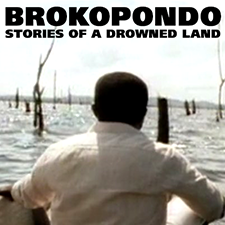 Brokopondo: Stories of a Drowned Land (John Albert Jansen, 1994, 47 min, festival exclusive!)
Brokopondo: Stories of a Drowned Land (John Albert Jansen, 1994, 47 min, festival exclusive!)
The construction of the Brokopondo dam to generate hydro-electricity for the aluminum industry and speed urbanization in the 1960s in Surinam, a former Dutch colony caused the flooding of lands and villages of 5,000 Saramaccan Maroons. In 1994 filmmaker John Albert Jansen returned to the site of devastation, together with Surinam writer Dorus Vrede who was born in one of the drowned villages.
TRINIDAD & TOBAGO
Over Flow (Elizabeth Ramjit, 2018, 18 min)
A firsthand account of the devastation from overbank floods and flash-floods in the twin-island Caribbean nation of Trinidad and Tobago. Trinidad and Tobago generates over 700,000 tons of waste per day identifying it as one of the highest carbon footprint per capita on the planet. This garbage ends up in the waterways and the sea. Ramjit interviews activists on a quest for revival.
Small Change (Dylan Quesnell, 2016, 21 min)
Climate change within the Trinidad and Tobago context, with a focus on the present state of our local economy, and changes that can be made in the grassroots, private and public sectors to improve the existing state of our environment, while having significant social and economic benefits for the country and people of T&T as well.
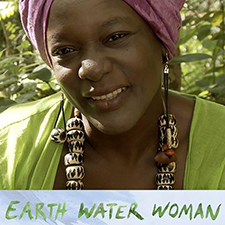 Earth, Water, Woman (Sarah Feinbloom & Swati Guild, 2013, 23 min, festival exclusive!)
Earth, Water, Woman (Sarah Feinbloom & Swati Guild, 2013, 23 min, festival exclusive!)
The ongoing efforts of the Fondes Amandes Community Re-Forestation Project in Trinidad and Tobago, and its charismatic leader Akilah Jaramogi, to transform barren hillsides into a vibrant, healthy ecosystem. A micro solution for the macro problem of climate change, this documentary urges young viewers everywhere to examine their relationship to Mother Earth. Today Fondes Amandes is a thriving village atop a flourishing forest of 150 acres where residents have planted about 60,000 seedlings over the past 30 years.
URUGUAY
El país sin indios (Nicolás Soto y Leonardo Rodríguez, 2020, 63 min)
La compleja temática indígena en Uruguay a través de la historia de Roberto y Mónica, dos descendientes de charrúas que reivindican sus raíces y nos hacen volver la mirada hacia la historia para cuestionar el presente. En una sociedad que niega parte de su origen, la búsqueda de la identidad se convierte en un desafío.
UNITED STATES
Impact with Gal Gadot, Episode 4: Killer Red Fox (Vanessa Roth, 2021, 12 min)
Grand Caillou/Dulac, Louisiana, U.S.A.: Meet Chief Shirell, the first female chief of her southern Louisiana tribe. Her ancestors have lived on the land for hundreds of years, and they are now expected to be among the United States’ first climate refugees. Chief Shirell can’t stop the storms, but she is impacting the legacy of her ancestors, the lives of her community today and the future of her people.
ExxonMobile Lobbyist Reveals Company’s Involvement with ‘Forever Chemicals’ (Alex Thomson (reporter), 2021, 10 min)
It was an extraordinary and unusual apology. Last night Darren Woods, the Chief Executive of ExxonMobil, said his company was “deeply apologetic” about comments broadcast on this programme last night, in which one of the company’s top Washington lobbyists revealed his efforts to water down a new law to tackle carbon emissions. The lobbyist – Keith McCoy – was captured on camera by Greenpeace UK – and his comments set off a storm of negative coverage in the US.Tonight we have more – this time about ExxonMobil’s use of controversial toxic ‘forever chemicals’, gas and plastics.
Peehee Mu’huh (Protect Thacker Pass, 2021, 2 min)
Some people say that we “need” a lithium mine to supply lithium for cars and batteries that we “need”. That blowing up the side of this mountain at Peehee mu’huh / Thacker Pass will be “benign”. Tell that to the species who live at Thacker Pass who will be killed or lose their homes forever. Tell that to the People of Red Mountain whose sacred lands will be desecrated. How could blowing up Thacker Pass be benign when it will destroy so many wild beings, and poison the land, the water, the air forever on human terms? ALL mines poison the land, the water, and the air. ALL of them. Join us to #ProtectPeeheeMuhuh #ProtectThackerPass.
Thacker Pass (Protect Thacker Pass, 2021, 4 min)
On January 15, 2021, the the Humboldt River Field Office of the U.S. Bureau of Land Management issued a Record of Decision (RoD) approving the Thacker Pass Lithium Mine proposed by Lithium Nevada Corporation. Protect Thacker Pass land defenders have occupied the mine site since that day. Call Secretary Deb Haaland *right now* to ask her to meet with the People of Red Mountain and rescind the permits for the Thacker Pass Lithium Mine
Lake Powell Pipeline (Vice News, 2021, 11 min)
Washington County, Utah is one of the fastest growing regions in the country and to sustain that growth they want to build a pipeline to divert billions of gallons of water from the Colorado River. Conservationists say the project could be a disaster for the drought-stricken Southwest.
This Land (Chelsea Jolly and Whit Hassett, 2020, 11 min)
Runner and advocate Faith E. Briggs used to run through the streets of Brooklyn every morning. Now, she’s running 150 miles through three U.S. National Monuments that lay in the thick of the controversy around public lands. Accompanied by running companions who represent diverse perspectives in what it means to be a public land owner, she assesses what is at stake if previously protected lands are reduced and if the public is largely unaware. This Land is a story about land access told through a journey of inclusion and empowerment.
Hesapa: A Land Back Film (NDN Collective, 2020, 5 min)
On July 3, 2020, Land Defenders took to Mt.Rushmore to reignite the fight for the Black Hills and the closure of Mt. Rushmore, a symbol of white supremacy and racism. Now, 21 of those Land Defenders who stood in defense of the sacred Ȟesápa, the ancestral homelands of Lakota and many other Indigenous Nations, are facing criminal charges. Inspired by the action taken that day, NDN Collective has developed the LANDBACK campaign, to get Indigenous lands back into Indigenous hands, and empower Indigenous people across Turtle Island to do LANDBACK work in their own communities.
Landfills as Museums (Sophia Li, 2020, 4 min)
Landfills as Museums documents the largest landfill in the U.S. in collaboration with environmental nonprofit Slow Factory Foundation, the United Nations and Waste Management.
America’s Wilderness Is For Sale (Laura Bult and Liz Scheltens, 2019, 10 min)
The Trump administration opened up America’s public lands to mining and fossil fuel companies on an unprecedented scale, lifting decades-long protections from millions of acres of wilderness across the country. In Minnesota, one proposed copper mine is pitting neighbors against each other as they weigh the benefits of new mining jobs against the environmental consequences of new mines.
The Land of my Ancestors (Rucha Chitnis, 2019, 10 min)
Celebrates the legacy of beloved Ohlone elder Ann-Marie Sayers. Sayers has devoted her life to preserving the stories and culture of her Indigenous ancestors. This documentary challenges viewers to consider the perilous impact of colonization on the Ohlone people in the Bay Area. It also follows Sayers as she provides a refuge in the sacred Indian Canyon for Indigenous people to reclaim their culture, spirituality, and heritage.
L’eau et la vie (Water is Life: From Standing Rock to the Swamp, Sam Vinal, 2019, 25 min)
On the banks of Louisiana, fierce Indigenous women are ready to fight—to stop the corporate blacksnake and preserve their way of life. They are risking everything to protect Mother Earth from the predatory fossil fuel companies that seek to poison it.
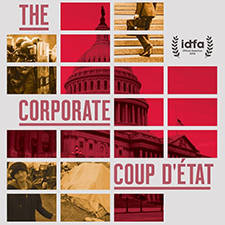 The Corporate Coup d’etat (Fred Peabody, 2018, 90 min, festival exclusive!)
The Corporate Coup d’etat (Fred Peabody, 2018, 90 min, festival exclusive!)
Explains how President Trump is the result of failed neoliberal globalist policies, and a ‘corporate coup d’état’ in which corporations and billionaires were able to gradually take control of the political process in the U.S. and elsewhere. In the words of Pulitzer Prize-winning author Chris Hedges: ‘Donald Trump is not an anomaly. He is the grotesque visage of a collapsed democracy. The creeping corporate coup d’état that began 45 years ago is complete. It has destroyed the lives of tens of millions of Americans no longer able to find work that provides a living wage, cursed to live in chronic poverty.
More than a Pipeline (Lex Olthof, Robert Bridgeman, 2017, 63 min)
With over 500 years of genocide and oppression of First Nations peoples, Standing Rock is a next chapter in that story. The objective of this film is to increase global awareness about the suppression of The First nations of the US and other countries around the world. But also to show how they resurrected and found back their identity.
VENEZUELA
Displaced: Oil and Ruin – The Venezuelan Exodos (Tuki Yencquel and Bettina Kolb, 2020, 53 min)
Venezuela is experiencing an unprecedented humanitarian crisis. Hunger is widespread and there is a severe shortage of medicines. The UN estimates that more than four million people have now fled what was once South America’s richest nation. Venezuela is in the grips of what is now the world’s second largest refugee crisis after Syria. Venezuela was once considered one of the world’s wealthiest countries but that wealth was owned by a minority of oligarchs. The billions in profits generated by the oil business during the boom years between 2003 and 2014 have largely ended up in private pockets. And once oil prices collapsed in 2014, Venezuela was plunged into economic crisis. The country has become a pawn in a geopolitical contest over power and natural resources, with the US, Russia and China all looking to assert their own interests.
